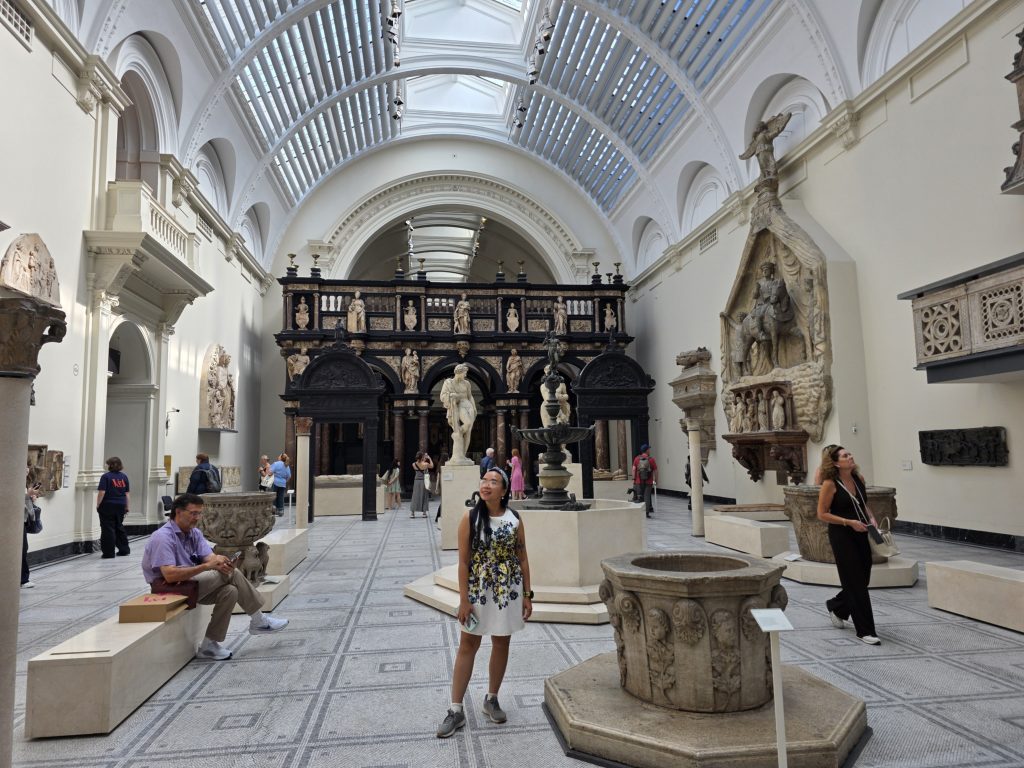It had been over two years since I last set foot in London, a city that holds a special place in my heart. This time, I decided to immerse myself once again in one of its greatest treasures – the museums. London’s cultural scene is unparalleled, and I vividly remember my first visit back in 2017 when I studied abroad at University College London (UCL) through an exchange program from my university in the US. It was then that I fell in love with the city’s art scene, spending countless hours wandering through the capital’s many free museums.
One of my all-time favourites was – and still is – the Victoria and Albert Museum. Having visited countless times over the years, I still haven’t managed to see all of its treasures. The V&A is enormous, holding over 2.8 million objects that span 5,000 years of human creativity. From textiles and ceramics to jewellery and photography, it’s a museum where you can get lost in history, craftsmanship, and imagination.
So, on a sunny London day, I decided it was time to return.
The Journey to the Museum
That morning started with a 10km run through Richmond Park, my favourite green escape in London. The park was alive with runners, cyclists, and families enjoying the summer sun. Feeling refreshed, I set out to meet my long-time museum companion, Nick. We’ve been “museum buddies” for years – our friendship started back in high school in Canada, where we visited the Museum of Anthropology at UBC together. Later, in New York, whenever Nick visited, we explored museums side by side. And during my London years, we’d go to major exhibitions across the city.
We walked for about an hour and a half to South Kensington, making our way through tree-lined streets, charming neighbourhoods, and bustling cafés. Along the way, we stopped for fresh croissants at a small bakery. It’s these little moments – warm pastries in hand, sunlight on my face – that make me deeply grateful for being back in this city.
When we reached Exhibition Road, the atmosphere shifted. Families, tourists, and art lovers were streaming toward the iconic museums – the Natural History Museum, the Science Museum, and of course, our destination: the V&A.
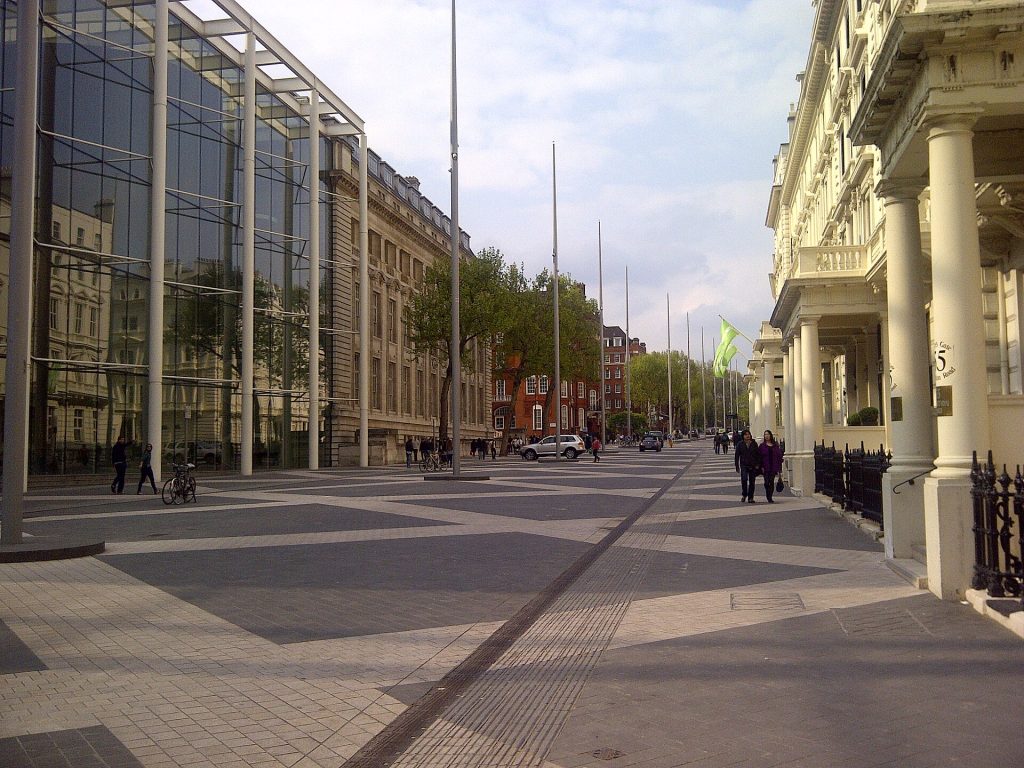
The Victoria and Albert Museum – A Cultural Icon
Founded in 1852 and named after Queen Victoria and Prince Albert, the V&A is the world’s largest museum of applied and decorative arts and design. Its collections span continents and centuries, and its exhibitions have a reputation for being immersive, educational, and visually stunning.
The museum is free to enter, a gift to locals and visitors alike, and it remains a hub for culture in the heart of South Kensington. It has also expanded over the years, with branches such as V&A Dundee, Young V&A in Bethnal Green, and the upcoming V&A East Museum opening in 2026.
Nick, as a V&A member, has access to exclusive exhibitions and usually invites me along. This time, we were here for something particularly glamorous – the Cartier Exhibition.
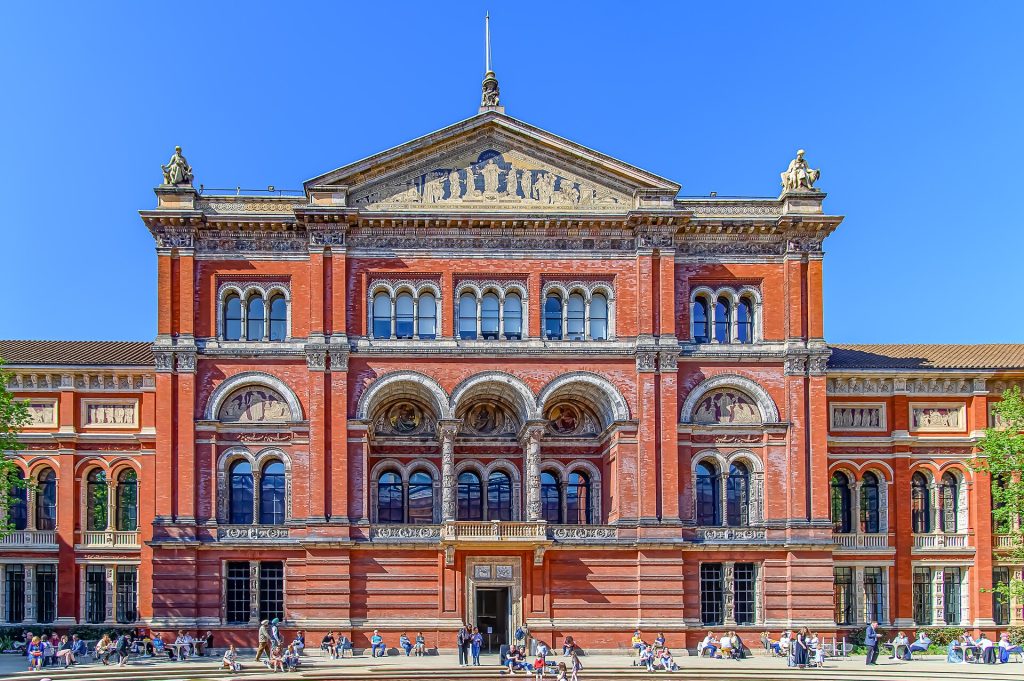
Stepping into Cartier’s World
The Cartier exhibition at the V&A, running until 16 November 2025, is a breathtaking showcase of over 350 jewels, watches, and precious objects. It tells the story of how Cartier transformed from a Parisian family jeweller, founded by Louis-François Cartier in 1847, into one of the most iconic luxury brands in the world.
From the moment we entered, I was captivated by the layout and storytelling. The exhibition is divided into three main sections, each exploring a different aspect of Cartier’s legacy.
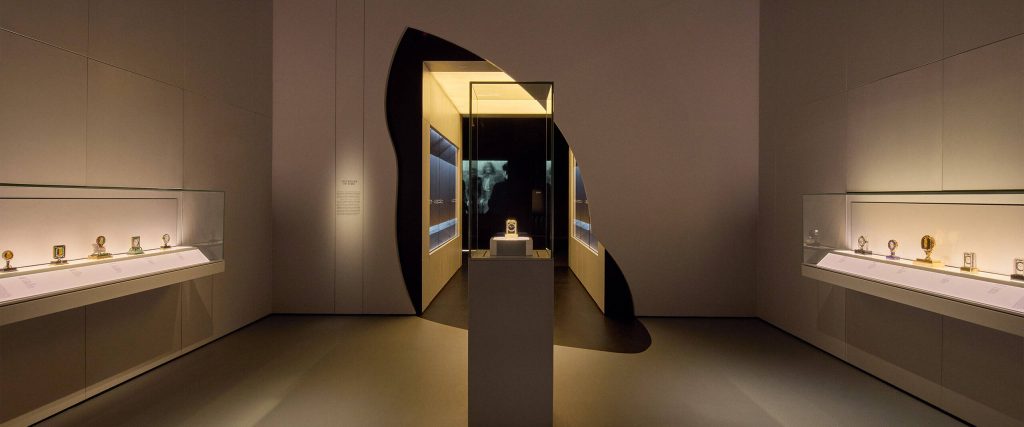
Section One: Cartier’s Creativity
The first gallery focuses on the creative vision of Louis, Pierre, and Jacques Cartier, the brothers who expanded the brand globally to Paris, London, and New York. Cartier became known as the “jeweller of kings and the king of jewellers,” attracting royalty, aristocrats, and later Hollywood stars.
Some pieces that caught my eye included:
-
The Williamson Diamond Brooch, commissioned in 1953 for Queen Elizabeth II’s coronation. Its centrepiece is the rare 23.6-carat pink Williamson diamond, a wedding gift from 1947.
-
A rose clip brooch from Princess Margaret’s private collection, elegant yet playful.
-
A ceremonial diamond necklace and choker made for the Maharaja of Patiala in 1928, blending Indian jewellery traditions with Art Deco modernism.
These works aren’t just beautiful – they’re historical markers, each tied to a moment, a person, or a cultural exchange.
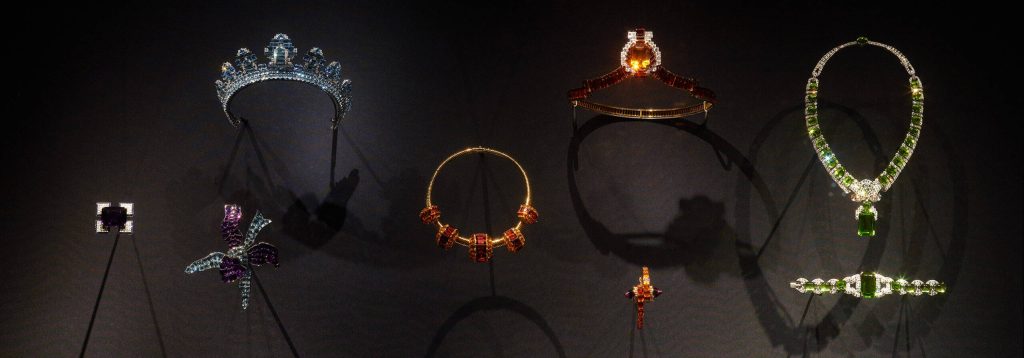
Section Two: Exceptional Materials and Techniques
This part of the exhibition celebrates Cartier’s technical mastery. The brand has always sourced extraordinary gemstones, from the finest jade beads (once owned by American heiress Barbara Hutton) to the vivid yellow 101-carat diamond in the Allnatt Brooch.
One of the most striking pieces was the snake necklace commissioned by María Félix, a Mexican film star. The craftsmanship was so precise that the necklace seemed alive, coiling with lifelike movement.
Cartier’s watchmaking heritage was also on display, including the Santos, the first modern men’s wristwatch from 1904, and the surreal Crash watch from 1967, a product of Swinging London’s creative energy.
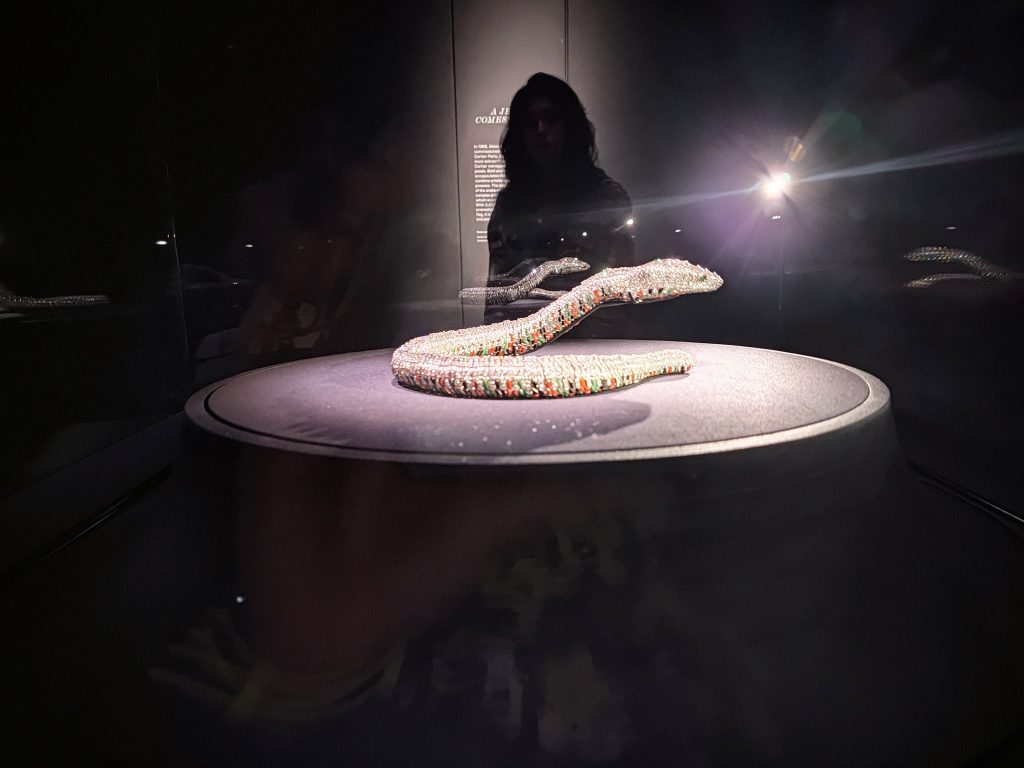
Section Three: Constant Reinvention
The final section highlighted how Cartier has stayed relevant for over a century. From pioneering advertising campaigns to collaborating with style icons, Cartier consistently merges tradition with modernity.
The finale was a dazzling display of Cartier tiaras—the pinnacle of glamour and craftsmanship. I lingered in front of the Opal Tiara, commissioned in 1937 and worn as a necklace at Queen Elizabeth II’s coronation. Another standout was the Garland Style Scroll Tiara, worn by Rihanna in 2016 on the cover of W Magazine.
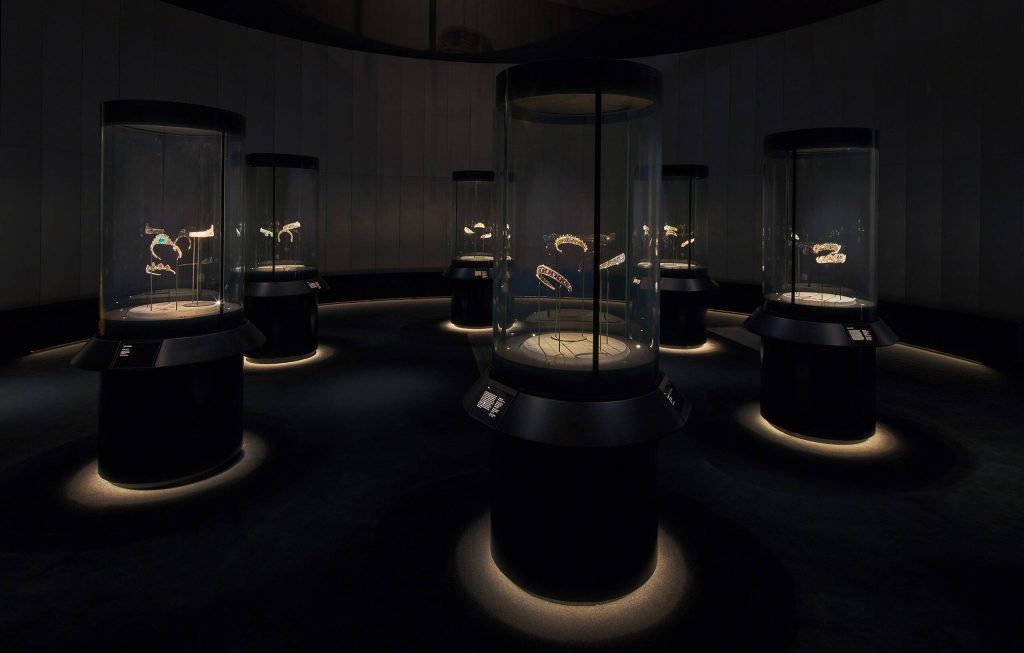
Lunch in Chelsea
After spending hours inside, we stepped back into the sunny streets of London and walked to Chelsea for lunch. We found a small, local steakhouse – quiet at this early hour – and enjoyed a hearty meal of steak, baked sweet potatoes, and mushrooms, washed down with my favourite Earl Grey tea.
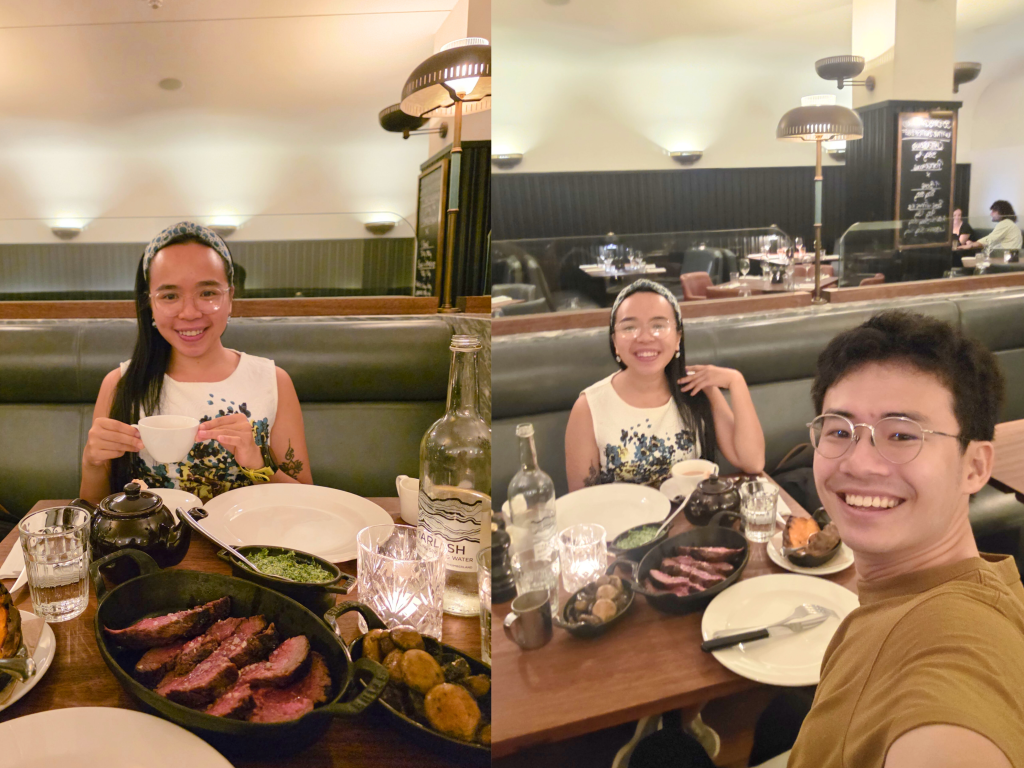
Reflections on the Day
As I sat there, sipping tea and chatting with Nick, I felt an immense sense of gratitude. This day wasn’t just about seeing beautiful objects. It was about revisiting a city that has shaped me, reconnecting with a dear friend, and being reminded of the joy that art and history bring into our lives.
The Cartier exhibition was a journey through creativity, craftsmanship, and cultural heritage. And the Victoria and Albert Museum remains, as ever, a place where the past and present meet in the most inspiring ways.

